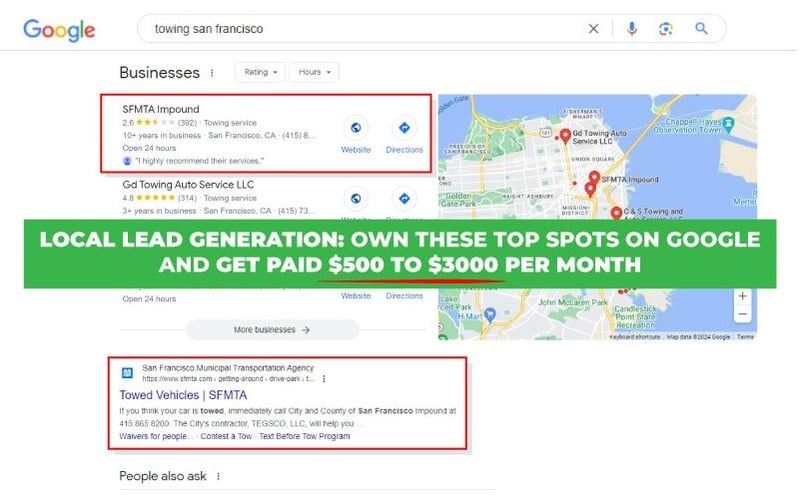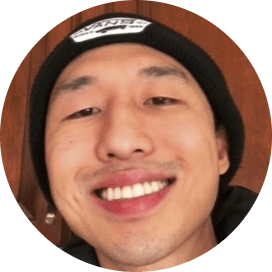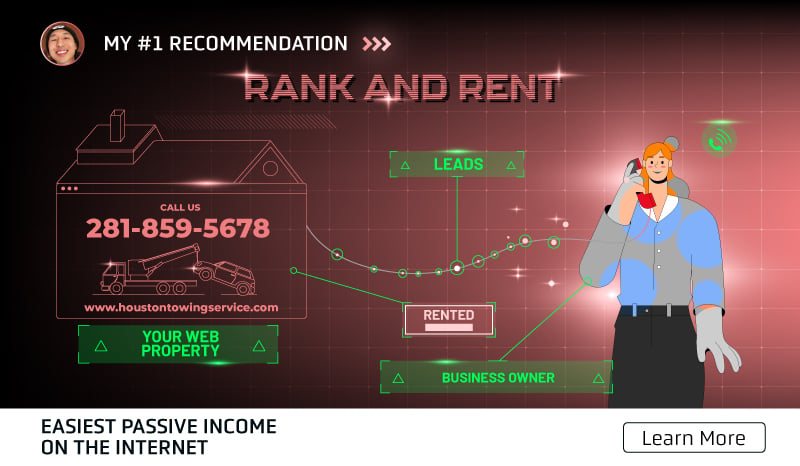Peng Joon’s Million Dollar Ads Review: PPC Pros, Cons, and Alternatives
Updated On

Peng Joon’s Million Dollar Ads is a marketing education program. It teaches online business owners and marketers how to craft, structure, and scale profitable paid advertising campaigns, particularly on platforms like Facebook and Instagram, with the goal of generating high returns on ad spend (ROAS).
Million Dollar Ads reviews are mixed and scarce. Positive reviews say the program’s structured framework helps them write effective high‑converting ads and appreciate the clear, step‑by‑step lessons. Common complaints focus on heavy upsells, high costs, and a lack of depth for experienced marketers.
In my 10+ years of experience with online marketing, PPC ads as taught by Million Dollar Ads is like Saturday Night Live’s writers’ room, sketches going stale after one airing so you crank new angles, fresh hooks, and different cuts nonstop just to keep laughs, and clicks, alive. It’s like the FBI’s Internet Crime Complaint Center, floods of bogus signals posing as real attention, bots and click farms nibbling the budget while you sift out fakes instead of scaling winners.
This article reviews Million Dollar Ads, outlining what the program teaches (copy frameworks like Hook-Story-Offer, 15 ad types, swipe files, and step-by-step lessons) It also covers Peng Joon’s background and related products. That last part will compare the PPC approach with steadier alternatives like local lead generation.
What Are the Pros and Cons of Million Dollar Ads?
Pros:
- Provides proven ad frameworks used in million-dollar campaigns
- Step-by-step structure is beginner-friendly
- Includes swipe files of high-converting real ads across industries
- Teaches the Hook-Story-Offer (HSO) model for persuasive ad writing
- Focuses on ad message and offer, not just targeting or tech setup
- Emphasizes copywriting psychology and ad angle testing
Cons:
- Not a full Facebook Ads course (limited coverage of targeting and backend setup)
- Examples are mostly for digital products and not ideal for eCommerce or physical products
- Additional upsell offers may follow after purchase
- No live coaching or support community included
- Refund policy requires action and proof of implementation and not satisfaction-based
Price: Million Dollar Ads costs ** ** $97
Refund Policy: Million Dollar Ads has a 7-day refund window with conditions.
What Is Inside Million Dollar Ads?
Chapter 1: Journey Thru Symptoms Ads
The copy of the ad is a numbered list that walks through the common issues and problems that aspiring entrepreneurs face, basically driving home the point unless you know what you are doing, both as the service you are selling as well as selling your service your efforts are close to futile, pointless. Then, it concludes with a choice and a CTA (call to action).
Rather than continuing on in futility, you can invest in Peng’s product, which promises to show you how to close deals using sales videos, webinars and even live events.
Chapter 2: Story Bender Ads
One of Peng’s principles to creating explosively effective ads is very similar to how comedians create comedy. They start a story and then add an unexpected twist at the end, creating the humor. Peng’s story bender ads level up the comedic sequence, because they have to.
You see, comedians already have the attention of their audience, Peng’s ads don’t have that luxury. So Peng baits his ads with a hook that will grab the gaze of a person grazing from Facebook’s feed.
Chapter 3: Blockbuster Ads
Rather than telling a story, this type of ad addresses the viewer’s likely problem head-on. To amplify the intensity of this style of advertisement, Peng often pairs a short string of copy with a video ad. Do Not allow anyone to steal your dreams. Learn to stand your ground, safeguard your mind and preserve your energy.
Chapter 4: Yadda Yadda Yadda Ads
For this type of promotion, Peng writes out his full pitch, and then revises it, highlighting the most important pieces and changing out the nonessential parts for literally “yadda yadda yadda.”
Chapter 5: Objection Based Retargeting Ads
Facebook Pixels are great, aren’t they? You can track down visitors who didn’t buy. Which is where this kind of ad begins. The visitor left your sales funnel without making a purchase, so clearly they got hung up on something along the way. Peng’s objection ads address a variety off common places where prospects get stuck, with the goal of nudging the would-be customer just enough so they pull the trigger.
Chapter 6: Red Ocean Strategy
The reason you run this kind of ad is to show how your product is different from your competition, reminding them that you have a unique solution. The way this type of ad is written is to first jolt your target audience out of their seat by sharing with them something they don’t see very often, such as a weird headline.
Peng is different as he’s using space, not to promote his product immediately, but to through scrolling viewers off, as they probably don’t see “Ugh. Another Ad.’ every day. Continuing his copy, he then scopes in on his audiences’ needs and the popular, boring solution to those needs.
(He’s advertising to course creators, selling them advice on how to upgrade their funnel). Then, he switches things up, showing how his product offering is different from the average webinar product.
Chapter 7: Background Image Trigger Ads
A background image trigger ad grabs the attention of scrollers by having Disneyland in the background and then brings their attention to the ad copy out of curiosity.
Chapter 8: Feel, Felt, Found Ads
This type of ad prioritizes empathy, showing understanding for the needs of other entrepreneurs and then leading them to a solution for their specific problem (lack of productive brainstorming).
Chapter 9: Dream 100 Bridge Ads
Peng used this ad to get 100+ influencers to invest in his product. The copy walks the visitor through step-by-step encouraging them to realize, “Hey, I’m in that position too! I want/need to scale my content to have an impact, so I’m going to do what Peng did.”
Chapter 10: Reluctant Hero Ads
Similar to his Feel, Felt, Found ad type, Peng has developed his Reluctant Hero kind of promotion as a humble sharing of a solution that has been helpful to the individual advertising it.
Chapter 11: Troll Yourself First Ads
With this kind of advertisement, Peng is getting ahead of any negative talk about himself or his business. Since he’s the one bringing up the negative feedback about his own company, he’s respected a lot more.
Chapter 12: Hater Ads
Similar to Peng’s “Troll Yourself” Ads, this kind of ads are meant to be a proactive spread of negative info, as a way to control the narrative. It’s hard to beat someone who never quits.
Chapter 13: Viral Meme Ads
Peng’s Viral Meme ad type takes a super popular meme, and throws a twist on it. Viewers are so comfortable with the meme that it provokes an interest in the ad, encouraging them to check the promotion out. Your results in life are based on the choices you make. If you want a different result, make a different choice.
Chapter 14: Hilarious Images Ads
This ad type is all about grabbing the attention of the viewer with an unusual image and then capitalizing on the attention with a short-and-to-the-point story and call to action. Closing isn’t about conquering your audience, it’s about building a relationship.
Chapter 15: Timely, Relevant, Unique Ads
Basically the gold standard of ads, Peng shows how he structures his exquisite ads that leverage current events to gain higher views and conversion rates.
Who’s Peng Joon?
Peng Joon is an a young internet guru who’s made a decent chunk of change marketing social media courses, scoping in on how he’s run successful FB ads in the past. Is he legit? Most of his marketed SMMA material is from 2018, so pretty outdated imo. Coming out of Malaysia, Peng has been operating his internet businesses for a while.
What Are Peng’s Products?
- Million Dollar Ads (The Book Summary Below)
- Videos Challenge (Video Ads)
- Content Formula Multiplier (Making a Sh** Ton of Social Posts)
- Platform Closing (Sales Book)
- Event Codex (Step-by-Step to Setting Up Your Own Events)
- Internet Income Intensive (Seminar)
- FB Secrets (Facebook Ads Course)
- Proven Presentations (Create Your Own Webinar Course)
What Are Some Million Dollar Ads Alternatives?
- Oliver Pestalozzi’s Google Ads Masters — A practitioner-led workshop that walks you through building, managing, and optimizing Google Ads campaigns using the tactics he used at Google.
- Joey Babineau’s 30 Day Google Ads Challenge — A step-by-step CPA/PPC program that has you launch Google Ads to EPI (Entry Point Income) pages to start generating affiliate commissions within 30 days.
- Nick Shackelford’s Foundr Facebook Ads Course — A comprehensive Facebook Ads training that takes beginners to advanced scaling, creative testing, and optimization for ecommerce.
Is Peng Joon’s Million Dollar Ads Course Worth It for Marketers?
Peng Joon’s Million Dollar Ads course is worth it for marketers who want to improve their copywriting and ad messaging because it teaches psychological triggers, story-based hooks, and creative ad formats that actually convert. The program’s biggest strength is its focus on messaging over technical targeting, helping you write ads that resonate emotionally with viewers. However, it’s limited to ad creatives and not the full process of scaling campaigns or managing audiences, which makes it best for those who already understand paid traffic fundamentals.
Is Local Lead Generation More Stable Than PPC Advertising?
In my experience, local lead generation is more stable than PPC advertising because it relies on search intent and organic traffic instead of fluctuating ad costs and algorithm changes.
Comparing PPC ads to local lead generation is like PAX East expo booths versus the Kew Gardens greenhouse. The expo demands nonstop renting of floor space, fresh promos, and loud pitches just to keep passersby from drifting. It’s just like how PPC relies on constant fresh creatives and spending. The greenhouse extends the growing season and starts seedlings early once calibrated. Similarly, local lead generation sites deliver steady inbound leads on autopilot, with no daily campaigns and low fees.
Why Is Local Lead Generation the Best Business Model for Consistent Profit?
Local lead generation is the best model for consistent profit because it creates evergreen digital assets that deliver leads month after month without ongoing ad costs. You’re not fighting platform competition or watching your cost per click spike. Instead, your ranked sites become reliable income sources that businesses happily pay to rent. The system compounds over time as every site you build increases your overall revenue stability.

A client of mine is Huntington Beach Electric Gates & Custom Metal, 6825 Warner Ave Huntington Beach, CA 92647, 714-364-4446, https://www.huntbeachelectricgates.com/. I earned $2,360 from 10% commissions when 8 of my leads closed for $23,600 in 1 month.
If you want to build lasting income without the pressure of constant ad management, click here to start your local lead generation business

Follow Me
Ippei Kanehara
Founder/CEO
$52K per month providing lead generation services to small businesses
Ippei.com is for digital hustlers, industry leaders and online business owners.
His #1 online business recommendation in 2024, is to build your own lead generation business.
